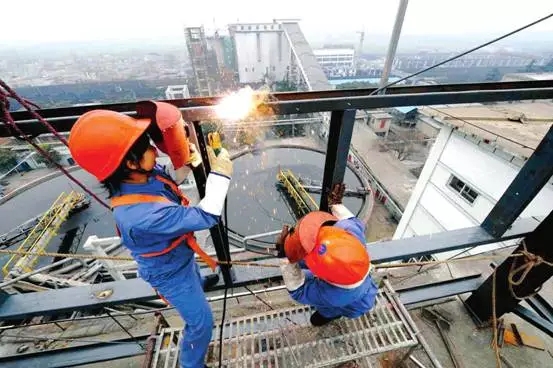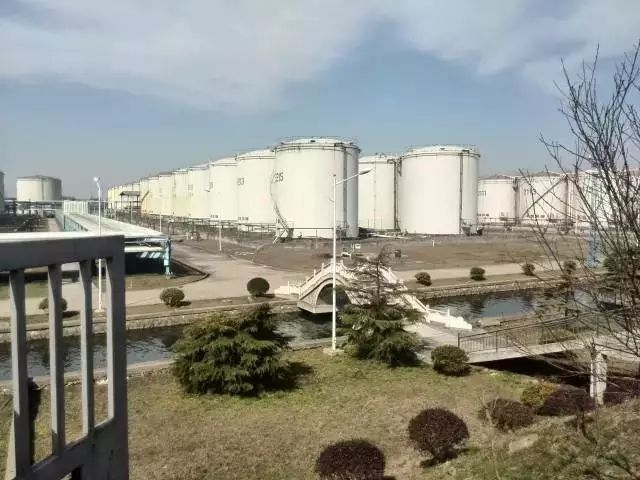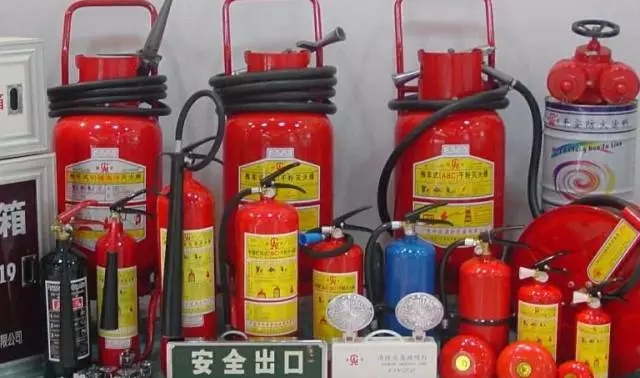
chemical 707
The boundaries of life and death
In the daily project construction, chemical maintenance and other operations, equipment, facilities, people and the surrounding environment, material, etc., need to set a relatively safe distance, this distance is sometimes the distance between life and death. In the process of normal operation, the safe distance, we don't look down upon!
1. oxygen acetylene bottle safety distance 5m oxygen acetylene and fire source safety distance 10m.
2. safety distance when the equipment is not power cut, its regulation value is as follows:
10kV and below 0.7m
35kV— 1.0m
110KV one 1.5m
220kV one 3.0m
500kV one 5.0m
The safety distance specified value refers to the case where the equipment is removed and the staff is considered within the normal range of work.
3. safe distance of live work

Definition of safe distance:
In order to ensure personal safety, a minimum of the minimum air gap between the operator and the charged body.
Specifically, the safety distance includes the following five kinds of gap distance: minimum safety distance, minimum distance to ground safety, minimum interphase safety distance, minimum safe operation distance and minimum combined gap.
At a specified safety distance, even if the highest overvoltage is generated in live work, the probability that the gap may break down is always below the predetermined acceptable value.
Minimum safe distance: minimum distance between ground potential operator and live body.
Minimum distance to ground: the minimum distance between an electrically charged body, a potential operator, and a surrounding ground body.
Minimum interphase safe distance: the minimum distance between an operator on a charged body and an adjacent charged body.
Minimum safe operating distance: in order to ensure personal safety, taking into account the necessary activities at work, the ground potential operator in the operation process and the live body should maintain the minimum distance between.
The basic principle for determining the minimum safe operating distance is to add a reasonable increment of human activity on the basis of the minimum safe distance. Generally speaking, increments are desirable for 0.5m.
Minimum combination clearance means the sum of the distance between the butt body and the charged body when the operator in the combined gap is at the lowest position of the 50 operating impulse discharge voltage.
4. high pressure gas pipeline
The distance from the foundation of the building shall be no less than 4 meters (medium pressure 0.4 to 0.8Mpa) and not less than 6 meters (medium pressure 0.8 to 1.6Mpa);
The distance from the street tree is not less than 1.2 meters;
The rail is not less than 5 meters from the railway;
The rail is not less than 2 meters from the tram;
There is no rule for distance from other roads.
5., high-altitude operations anti fall, it should be higher than 2 meters without anti drop measures, it is considered high-altitude operations.

6. the safe distance between crane and overhead transmission line
When voltage is 220KV, it is 6m in both horizontal and vertical directions;
Voltage 60— — 110KV, along the horizontal direction of 4m, vertical direction is 5m.
7. the oxygen bottles and empty bottles shall be stored separately in the oxygen station, the spacing is greater than 1.5 meters, and there is a sign. LZ, this 1.5 meters is also a safe distance bar.
8. height classification
A: the working height of 2-5 meters
Level two: working height for 5 to 15 meters
Level three: 15-30 meters height
Grade: operation height above 30 meters.
9. fire safety channel 3.5m, single channel to be set up in the end.
Three safety distance in safety regulation 10.
The first safe distance: the safe distance when the equipment is not power cut
The specified values are as follows: 10kV and below 0.7m, 35kV&mdash, 1.0m, l10KV, 1.5m, 220kV, 3.0m, 500kV, 5.0m.
Second safe distances: the safe distance between the normal working range of the work personnel and the live equipment. It takes into account the maximum space available for a worker in normal work, and the safe distance to live equipment.
The specified values are as follows: 10kV and below 0.4m, 35kV, 0.6m, 110kV&mdash, 5.0m, 1.5m, 220kV, 3.0m, 500kV, a..
Third safe distances: the safe distance between the human body and the electrified body when the ground potential is electrified.
The specified values are as follows: 10kV and below 0.4m, 35kV, 0.6m, 110kV&mdash, 1.0m, 220kV, 3.6m, 1.8m (1.6m), 500kV, a..
11. store the goods away from the wall 20cm.
12., high places should work with overhead wires to maintain a safe distance, from the ordinary wire more than 1 meters, 2.5 meters above the ordinary high voltage line, and to prevent the transport of conductor materials, touch wire.
Height less than 2 meters, but the work area is steeper than 45° slope near the pit, well, rotating equipment or stacked easy easy items, special working conditions (snow), mechanical shock, work in the presence of toxic gas in the room, shall be in accordance with the provisions of height the implementation of.
The height job in the following conditions is special height operation:
In the operation of datum of 30 meters (including 30 meters) above the height, high or low temperature, rain and snow weather, at night, close to or in contact with the charged body, no foothold or no firm foothold, disaster rescue, limited space environment for high altitude operations and the emissions of toxic and harmful gases and dust out place of work at height allowable concentration.
13. bottles of space 8 meters, minimum not less than 5 meters.
14. oil depots and industrial and mining enterprises safety distance: one or two, three or four, five levels of oil depots were 60, 80, 40, 35, 30 meters.
15. fire suppression at construction siteThe area is not less than 15m, and the distance from other areas is not less than 25m.
16., according to the performance, structure and work requirements of various electrical equipment (facilities), the safety distance can be roughly divided into the following four kinds:
Safe spacing of all lines.
Safety distance between transformer and distribution equipment.
Safety distance of various electrical equipment.
Safety distance during overhaul and maintenance.
500kV:5m 220kV:3m
110kV:1.5m 35kV:1m 10kV:0.7m
The 17 thousand and 100 volt high voltage line is the smallest distance from the building, with a safe distance of 1.2 meters and a vertical distance of 2.5 meters. In order to ensure the safety of the lives of households, the power supply department increased the pole from 10 meters to 12 meters or 15 meters.
18. when the HV equipment is earthed, what is the safe distance of the human body? Indoor should be larger than 4m, outdoor should be greater than 8m.
19. warehouse fire safety management rules (Ministry of Public Order No. sixth) inventory items should be classified, the stack storage, each stack covers an area of not more than one hundred square meters, spacing between the stack and the stack is not less than 1 meters, and the wall is not less than zero spacing Duo Duo 5 meters, with beam and column spacing of not less than zero to 3 meters, the main the channel width of not less than 2 meters.
Around 20. industrial enterprises with gas operation is prohibited within 40 meters of fire.
21. dangerous chemicals
A fireproof warehouse shall be maintained at least 20m of the storeroom between the hazardous chemicals warehouses and reduced to 12m when the storage capacity of the warehouse is less.
The distance between a warehouse of hazardous chemicals and important public buildings is at least 30m, and the fire distance is at least 25m with other civil buildings.
Class a hazardous chemicals warehouses, warehouses, fences and the area within the construction distance of at least 25m
The distance between large warehouses and adjacent residential areas and public buildings should not be less than 150m, and the distance between the adjacent industrial and mining enterprises and railway trunk roads should not be less than 100m, and the distance from the highway should not be less than 50m.
Large warehouses are normally divided into districts, and their administrative and living areas shall be located outside the reservoir area and separated from the reservoir area by a wall not less than 2m.
22., the oil pipeline and other pipelines inevitably cross, the safety distance shall not be less than 0.4 meters.
23. heights:
Definition of height work: 2 meters or more than 2 meters from the falling datum;
Three floors (6 meters) of scaffolding should be secured with a safety net.
24. the shield shall be closed as far as possible. When the site requires a mesh structure, the safety distance and the opening width of the mesh shall comply with the following requirements:
In order to prevent the damage of the finger tip by mistake, the opening width: the diameter and the length of the side or the short shaft of the elliptical hole shall be less than 6.5mm, and the safe distance shall be no less than 35mm.
In order to prevent the finger from passing through the damage, its opening width: diameter and side length or elliptical hole short shaft size should be less than 12.5mm, safety distance should be not less than 92mm.
In order to prevent the palm (excluding the first metacarpophalangeal joint) mistakenly passing through the injury, its opening width: diameter and side length or elliptical hole short shaft size should be less than 20mm, safety distance shall be no less than 135mm.
In order to prevent the injury of the upper limb by mistake, the opening width: the diameter and the length of the side or the short shaft of the elliptical hole shall be less than 47mm, and the safe distance shall be no less than 460mm.
In order to prevent the error caused by toe injury, protective cover bottom and the ground (or stand table) the gap should be less than 76mm, the safety distance shall be not less than 150mm.
The 25. ends of a scaffolding opening type scaffold technology specification of the wall must be set to the wall, the wall of the vertical distance should not be greater than the building height should not be more than 4m2 in a single step, the height of double row scaffolding should adopt rigid wall following.
26. large and medium-sized dangerous chemicals warehouse should be located in the area and the living area, between the two areas should be more than 2m high solid walls, walls and buildings within the area a distance not less than 5m, and should meet the distance between the walls on both sides of the building fire safety requirements.

27. retail outlets for dangerous chemicals should be kept at 500m above the densely populated area.
28. large and medium-sized dangerous chemicals warehouses should be kept at least 1000m distance from the surrounding public buildings, traffic arteries and industrial and mining enterprises.
29. in the evacuation passageway, “ emergency exit ” the sign should be set on both sides of the channel and the wall at the corner; the top edge of the sign shall not be greater than 1m from the ground.
The sign can be directly arranged on the ground, and the upper cover is provided with a non inflammable transparent and solid protective plate.
Mark the distance should not be greater than 20m, a walkway at the end from the sign distance should not be greater than 10m.
30. fire extinguishers should be placed firmly, the nameplate should be outward.
Portable fire extinguishers should be installed in the fire extinguisher box or on the hook and bracket. The top of the fire extinguisher should not be more than 1.50M from the ground. The height of the ground from the ground should not be less than 0.08m.

Fire extinguisher box must not be locked.
This article source: chemical 707;

Official public micro signal
 chemical 707
chemical 707



